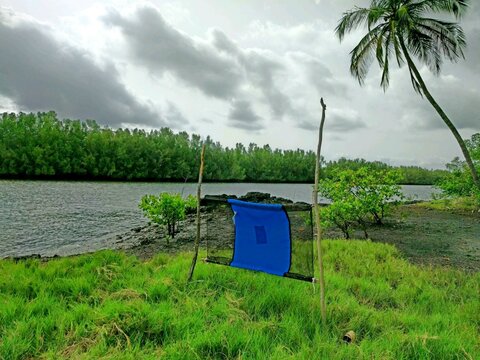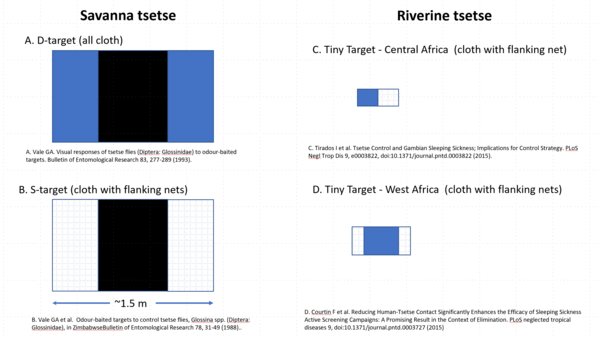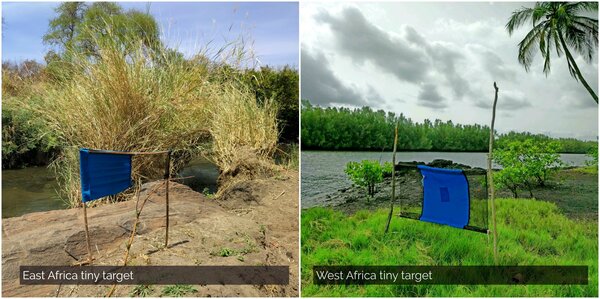What's the best target for controlling tsetse?

Targets come in various shapes and colours. Which is the best?
In general tsetse are attracted from a distance by blue and black colours, with blue being slightly more attractive than black. However, tsetse will land on a black surface in preference to a blue one and they also land on horizontal oblongs in preference to vertical ones. These basic responses provide the basic principles that underly the design of targets commonly in use.
Types of target that have been used to control various species of tsetse are shown here:
Target Shape
Larger targets are more effective than small ones, but larger targets are also more expensive. In general, consider having a target of about 1 - 1.5 square metres, with the length being equal to or up to 70% greater than the height. Examine the widths of cloth available in the market and adjust the dimensions to allow minimal cutting and wastage of cloth.
For targets aimed at riverine species of tsetse, small targets are more effective. Two models of “Tiny Targets” are manufactured by Vestergaard, in Central and East Africa the Tiny Targets use a 25x25cm pthalogen blue cloth attached to a 25x25cm black mosquito netting impregnated with deltamethrin and for the West Africa model the Tiny Target comprises a 50x50cm pthalogen blue cloth flanked on both sides by black netting of 50x25cm. Tiny targets have been shown to reduce G. fuscipes populations by more than 90% in Uganda (Tirados et al., 2015) and G. palpalis populations by 80% in Guinea (Courtin et al., 2015) leading to a decrease in disease prevalence.
Target support
You can use either steel or wooden poles to support the target. Wooden poles are cheaper but less durable.
Tsetse Plan will help you choose a target that suits your local situation.
References
Tirados, I., Esterhuizen, J., Kovacic, V., Mangwiro, T. N. C., Vale, G.A. Hastings, I., Solano, P., Lehane, M.J., Torr, S.J. (2015). Tsetse control and Gambian sleeping sickness; implications for control strategy. PlosNTD.
Courtin, F., Camara, M., Rayaisse, J-B., Kagbadouno, M., Dama, E., Camara, O., Traoré, Rouamba, J., Peylhard, M., Somda, M.B., Leno, M., Lehane, M.J., Torr, S.J., Solano, P., Jamonneau, V., Bucheton, B. (2015). Reducing human-tsetse contact significantly enhances the efficacy of sleeping sickness active screening campaigns: a promising result in the context of elimination. PlosNTD.

